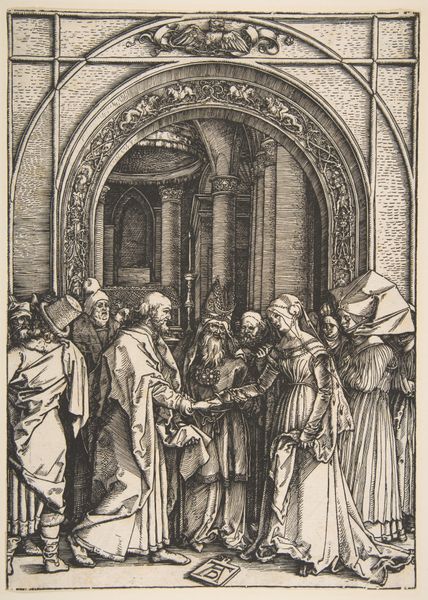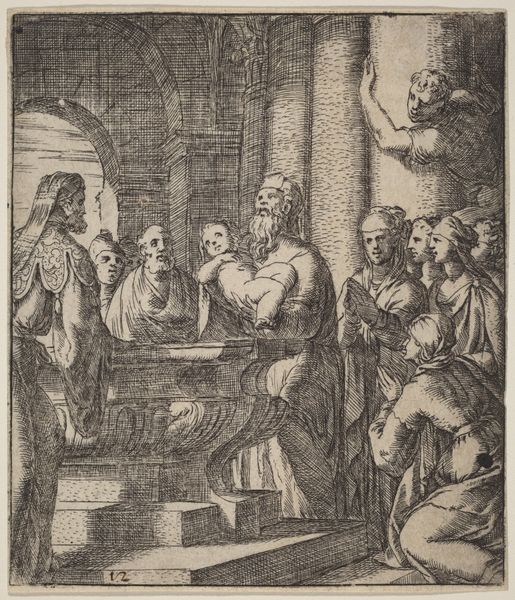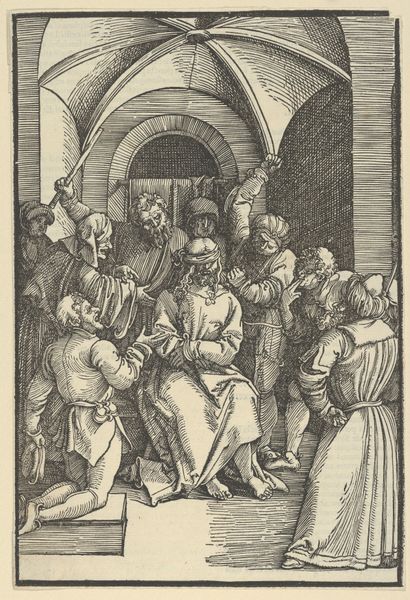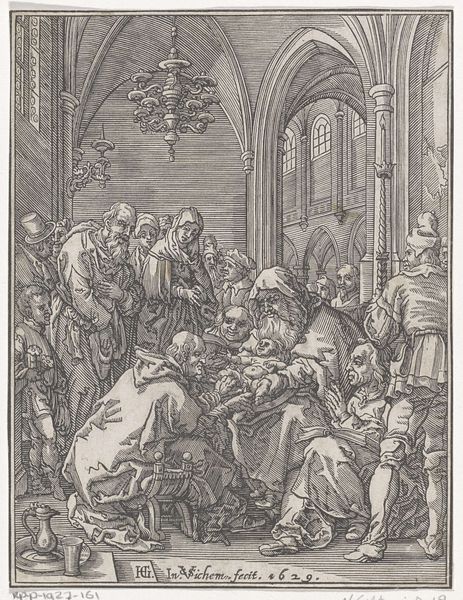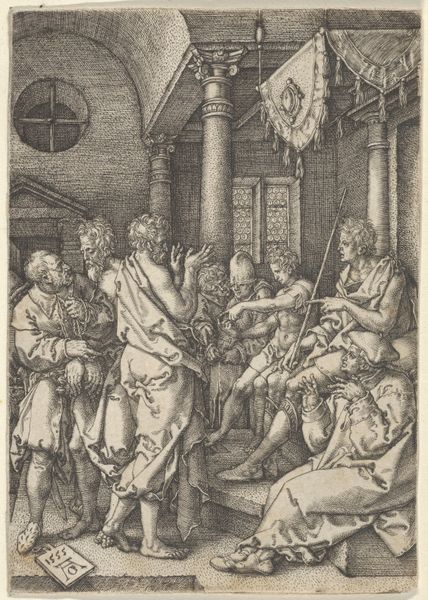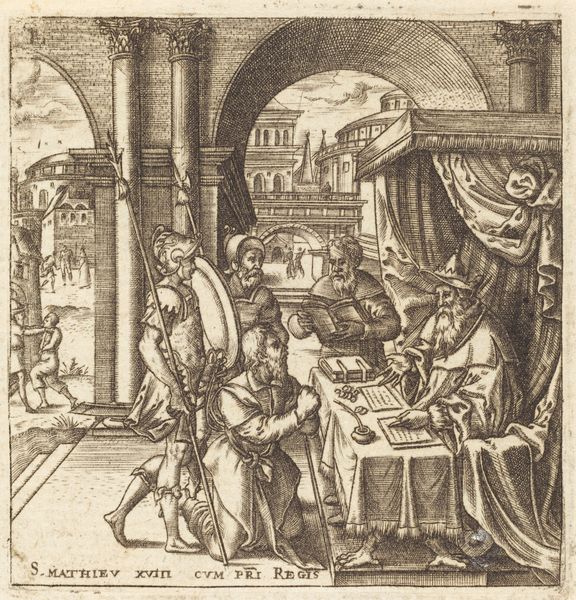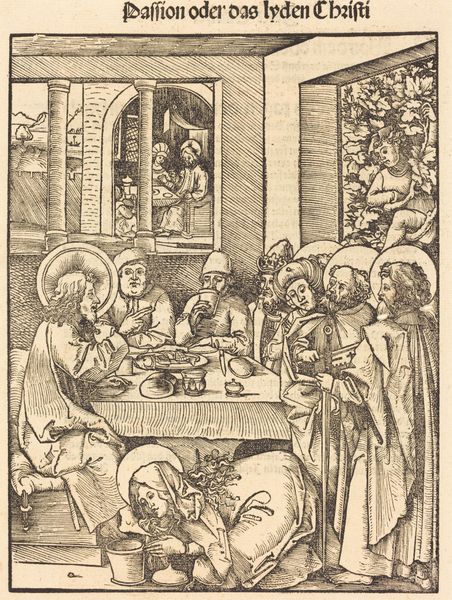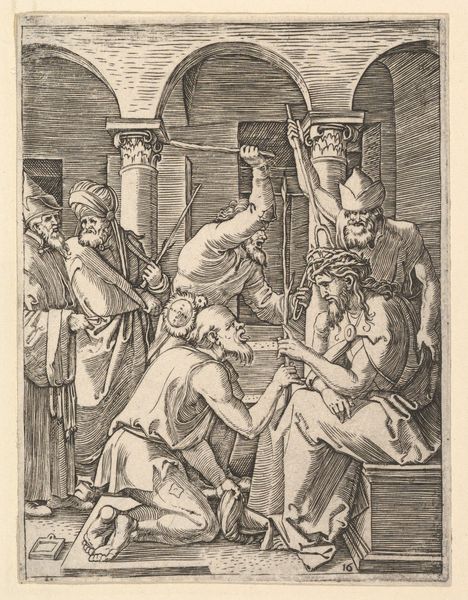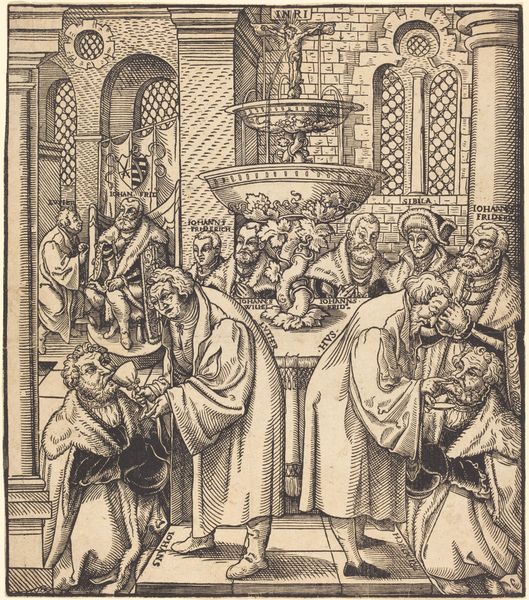
print, engraving
#
medieval
#
pen drawing
# print
#
pen illustration
#
figuration
#
group-portraits
#
line
#
genre-painting
#
history-painting
#
northern-renaissance
#
engraving
Copyright: National Gallery of Art: CC0 1.0
Curator: This engraving is titled "The Last Supper" by Sebald Beham, created in 1522. Beham was a fascinating figure from the German Renaissance. Editor: It’s remarkably detailed for such a small print, isn’t it? A bustling scene unfolding in this sharply-etched space. Almost claustrophobic, but compellingly so. Curator: The engraving shows The Last Supper staged within a grand, vaulted hall. Beham's architectural renderings reflect his historical context, depicting spaces with religious and societal importance during the early 16th century. But let's talk a little more about the scene itself, about what he's included or what is made central. Editor: What strikes me most is how…earthy it feels, not the reverent solemnity you often see. These are not ethereal beings; they are a boisterous, crowded table. And there’s a certain theatricality to it as well; everyone is performing. It doesn't feel necessarily pious or earnest. I almost feel as though I shouldn't be watching it. Curator: Yes, exactly! The historical and social contexts are especially significant. Beham was one of the "painter-peasants" in the German Peasants’ War, part of an artistic resistance against the powers-that-be. One reads these religious scenes against the backdrop of those intense social dynamics of the time. Editor: So you're saying it wasn't just about illustrating scripture; it was a social commentary of sorts? Curator: Precisely. Artists of this time infused political sentiments into even religious scenes. Take note, as well, how Beham seems to center those whom conventional art history, and power structures at large, marginalized at the time. It’s a subtle act, perhaps, but telling when examined within a bigger political picture. Editor: Looking at this print, I initially saw just a crowded table, but I now see resistance and perhaps some humanity amongst the performers around this historical event. Curator: Yes. It also hints at a question: What could seemingly religious illustrations teach us about art and politics of imagery today? Editor: A rich question indeed! It’s amazing how a single, relatively small, image can trigger so many avenues for thinking about art and culture.
Comments
No comments
Be the first to comment and join the conversation on the ultimate creative platform.

